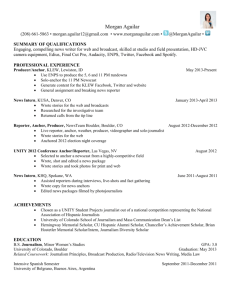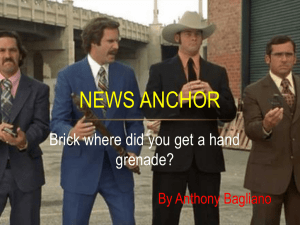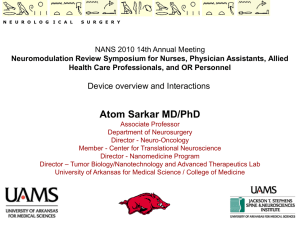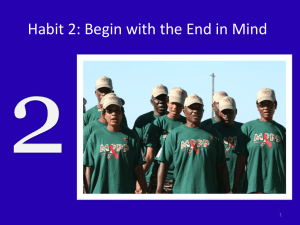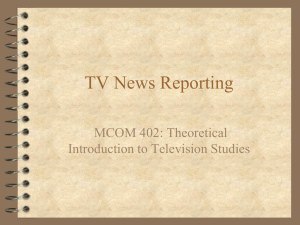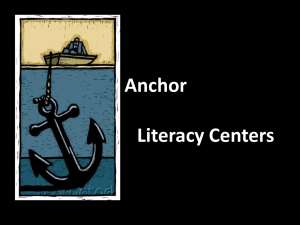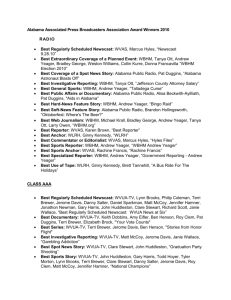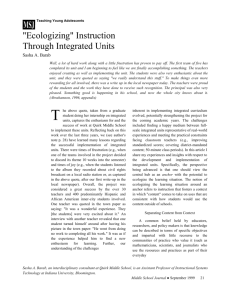File
advertisement
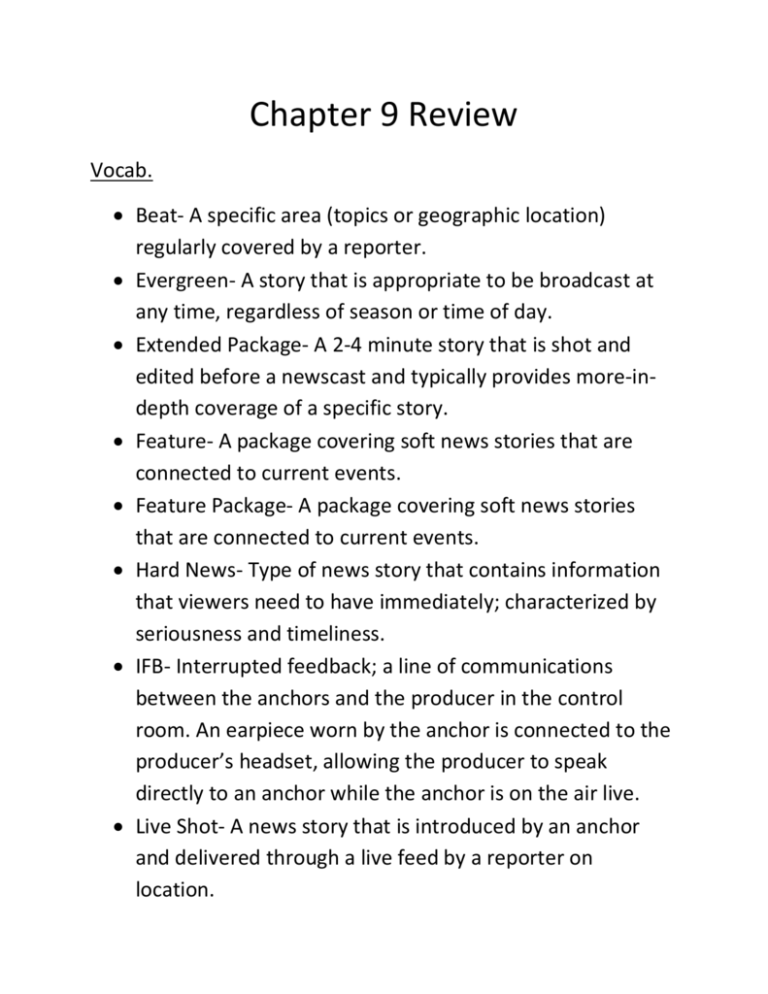
Chapter 9 Review Vocab. Beat- A specific area (topics or geographic location) regularly covered by a reporter. Evergreen- A story that is appropriate to be broadcast at any time, regardless of season or time of day. Extended Package- A 2-4 minute story that is shot and edited before a newscast and typically provides more-indepth coverage of a specific story. Feature- A package covering soft news stories that are connected to current events. Feature Package- A package covering soft news stories that are connected to current events. Hard News- Type of news story that contains information that viewers need to have immediately; characterized by seriousness and timeliness. IFB- Interrupted feedback; a line of communications between the anchors and the producer in the control room. An earpiece worn by the anchor is connected to the producer’s headset, allowing the producer to speak directly to an anchor while the anchor is on the air live. Live Shot- A news story that is introduced by an anchor and delivered through a live feed by a reporter on location. Mainstream Media- Television news programming that is expected to provide a fair and unbiased presentation of facts, without any particular viewpoint. News- Information people want to know, information they should know, or information they need to know. News Feature Package- A package covering soft news stories that are connected to current events. Also called a Feature Package or Feature. News Package- A package that covers hard news/current events. Non-Mainstream Media: Television news programming that is expected to express a particular point of view. Outro- The salutation at the end of a story; opposite of an intro. Package- A story that is about 1 ½-2 minutes in length, contains its own intro and outro, is edited, and can be inserted into a live program at any time the producer chooses. Patter- The spontaneous on-air conversation or small talk between anchors or anchors and reporters. Personality Feature- Type of human interest story that focuses on one person and why that person is newsworthy. Reader- A story, written by a reporter or anchor that does not have video to accompany the story. The anchor simply reads the text on the teleprompter aloud for the viewing audience to hear. Rundown- The organization of stories and sequence of a newscast in written form. Soft News- Type of news story that contains information that viewers may find interesting, but not necessarily information they need to know. SOT- Sound on tape; footage of a principal player connected to a story, which includes voice/audio that supports the story. Also called Sound Bite. Sound Bite- Footage of a principal player connected to a story, which includes voice/audio that supports the story. Stand-Up: Footage in package that depicts a reporter standing in front of the camera, speaking directly to the viewers from the location of a story. Tabloid Media- Television news programming that stretches and exaggerates facts by dealing with sensational stories; generally considered more entertainment than news. TRT- Total running time; industry abbreviation. VO- Voiceover; a type of story that incorporates B-roll video rolled-in from the control room, in addition to the script read by the anchor. VO-SOT: Voiceover-sound on tape; a type of story in which the audience sees B-roll video and hears both the anchor reading from the teleprompter and footage of a comment from a principal player in the story. Questions 1. What is Broadcast Journalism? A: A type of news reporting presented to the public electronically or by radio instead of being published in newspapers. 2. Define Mainstream Media. Give examples of mainstream media programming. A: Television news programming that is expected to provide a fair and unbiased presentation of facts, without any particular viewpoint. 3. What are characteristics of an appropriate story source? A: Facts, video evidence, and eye witnesses. 4. Explain how “consequences” factors into judging the newsworthiness of a story. A: Some news can make someone really emotional about. It can make someone sad, happy, mad, or it can even offend someone. 5. Which news elements are usually associated with soft news? A: News that the audience can find interesting, but don’t exactly need to know it. 6. What is an Evergreen story? A: A story that is appropriate to be broadcast at any time, regardless of season or time of day. 7. What is the function of an IFB? A: So the Anchor can hear any updated news or just listen to what the Producer is telling him. 8. How is a reader different from a VO story? A: VO has a video to go with script and Reader doesn’t. 9. What is an Outro? Give examples of typical outro lines. A: The salutation at the end of a story; opposite of an intro. This is Lisa Thompson, EyeWitness News. 10. What is the purpose of a stand-up? A: To give news live at the scene, where it happened. 11. What are the characteristics of a package? A: Own intro and outro, is edited, and can be inserted into a live program at any time the producer chooses. 12. Identify the challenges in investigative reporting. A: Legality, suing, destroying reputations, and whether it will cause public concern. 13. List and define some of the common abbreviations used in newscast scripts. VPB- Video Playback. Indicated that pre-recorded, edited piece should be inserted into the show. The words following “VPB” on a script identify the filename of the piece to be played at that time. SOT- Sound on Tape. Instructs the audio technician to get audio feed from the pre-recorded, edited piece. “Tape” is still used in the term even though the material is on a computer-this has carried over from the days of tape technology. CG- Character Generator. Directions to the person responsible for displaying graphics at the appropriate time. FSG- Full Screen Graphic. Directions to the person responsible for displaying graphics. FSGs may be colored background with still pictures, text, graphs, maps, or diagrams. VO- Voiceover. Let’s the audio technician know to keep anchor mics open for audio, even though the anchors are not seen on-screen. OSG- Over the Shoulder Graphic. Directions to the person responsible for displaying graphics. An OSG may be a box or design with text overlaying about 1/3 of the screen. The shot of the anchor is moved to the side of the screen to allow room for the OSG. Outcue- When audio comes from a pre-recorded piece, the last few words of the piece are noted in the script so the director can give a stand-by to the anchors and crew. 14. What is a Beat? A: A specific area (topics or geographic location) regularly covered by a reporter.

